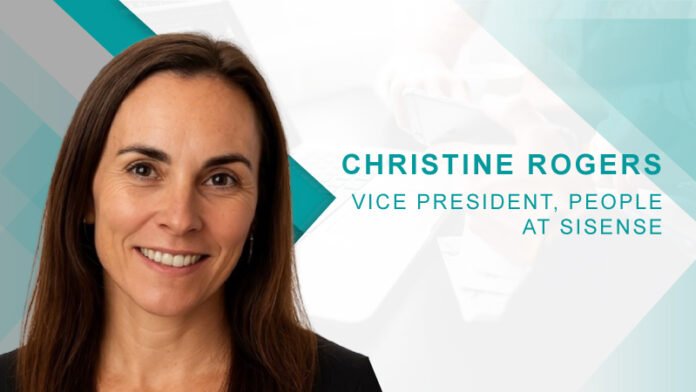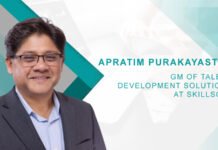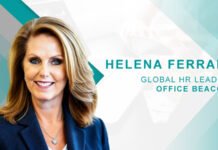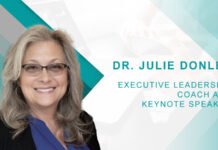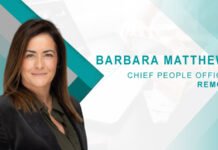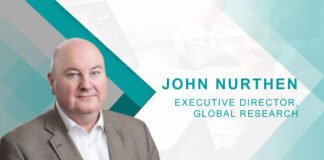To start, could you please walk us through your professional journey and what led you to your current role as Vice President , People at Sisense?
a. Throughout my HR career, I’ve had the opportunity to work across a wide range of industries, including finance, healthcare, and technology. I began my career as a recruiter at Allegis Global Solutions, a global workforce solutions provider, where I identified and placed top talent across organizations. This role was foundational in developing my ability to source and match candidates with the right opportunities.
b. Shortly after, I transitioned to a similar role at Gartner as a corporate recruitment partner. There, I gained valuable insights into how top business and technology talent is identified, evaluated, and hired. Given Gartner’s unique position at the intersection of research, consulting, and technology, I developed an understanding of what’s required for roles such as consultants, analysts, and cloud experts. I had to assess not only technical skills but also the strategic thinking necessary for success in these high-impact positions.
c. Building on this experience, I stepped into a Program Manager role in Global Talent Acquisition at MasterCard. There, I led global hiring initiatives, working closely with cross-functional teams to understand what we really needed, streamline the recruitment process, and make the candidate experience better across the board. By using data and trying out new sourcing strategies, both speed and quality of hiring improved. I also partnered with business leaders and HR teams to make sure our efforts were aligned with workforce planning goals. Doing this allowed my team to build a more diverse, high-performing talent pipeline.
d. Later in my career, I returned to Allegis Global Solutions, where I held several leadership roles, including Senior Client Manager/Director, MetLife Recruitment Delivery Director, and Healthcare Director. These positions allowed me to deepen my expertise in client management and recruitment, particularly in healthcare and insurance.
e. Prior to my current role at Sisense, I was the Director of Talent Acquisition at Altice USA, where I led talent strategies and recruitment in the telecommunications industry. That experience reconnected me with my passion for working in tech-driven environments and ultimately led me to join Sisense as Global Senior Director of Talent Acquisition and People Partners. In that role, I oversaw global hiring strategies while also partnering closely with leadership on broader people initiatives.
f. As of earlier this year, I now serve as Global Senior Director, People at Sisense. I lead global HR strategy and operations to foster a remote-first culture with teams scattered across multiple countries. My core responsibilities include fostering a cohesive and inclusive remote environment, aligning people strategy with business growth, and ensuring a seamless employee experience across borders. This role reflects the culmination of my career journey, blending talent acquisition, people operations, and strategic leadership globally.
You’ve played a vital role in guiding employees through ongoing geopolitical tensions, especially with teams based in Israel and Ukraine. How did you develop a responsive and compassionate HR framework to support employees during such high-stress periods?
a. Sisense was founded in Israel and has major operations in Ukraine; two regions that have dealt with unimaginable hardship and trauma related to war and other ongoing geopolitical tensions. Supporting our people through ongoing crises is a top priority for our HR team, guided by empathy, resilience, and commitment to meaningful action.
b. Sisense established an internal framework in 2022, when the war in Ukraine began, to provide around-the-clock support for impacted employees. This has carried over and been expanded upon since the October 7th attack in Israel and the current situation with Iran.
c. First and foremost, we focus on the safety and well-being of our staff. Our HR team makes personal phone calls to each impacted employee to ensure they’re okay and offers real-time assistance for any immediate needs. This can range from transportation to temporary relocation.
d. We offer mental health and trauma counseling in multiple languages with in-person and virtual options for maximum accessibility. We utilize employee engagement specialists for those who have experienced significant losses, and recognize remembrance days that commemorate these events. Additionally, we realize that flexibility is crucial in these uncertain times – we fully support employees’ ability to work asynchronously from a safe location of their choice, and we provide any necessary time off without penalty.
What have been some of the most challenging moments in leading during conflict, and how have you personally managed the emotional weight that comes with being a people leader in these situations?
a. Being an HR leader during global conflict has been some of the most humbling work I’ve ever done. To me, this is the core of where the human element of HR is most critical. As someone based in the U.S., these are experiences that I’ve never personally had to deal with. Witnessing the war’s impact on so many of my peers, whom I’ve grown close to, has been the most challenging and emotional aspect of my career thus far. Supporting employees facing real danger and constant uncertainty requires striking a balance between humanity and business continuity, which can be a challenging task to navigate. Businesses thrive when its people thrive, and we do everything in our power to turn hardship into resilience and strength here at Sisense.
b. On a personal level, the emotional weight of managing geopolitical conflict is heavy, but I manage it by prioritizing my mental health and creating safe spaces for myself and other employees. Through open and transparent communication, we welcome everyone to be real and honest about their grief, struggles, and challenges through a network of trusted peers and counselors.
Your efforts go beyond logistics and touch on deeply personal care—like sending gift baskets to those in military service. How do these gestures reflect your broader philosophy of employee well-being?
a. While gestures like sending gift baskets to military service and other first responders and their spouses might seem small on the surface, they reflect a much deeper philosophy. Employees are people first, and small acts of kindness and appreciation go a long way. Personal acts like sending a servicemember a care package make people feel seen and supported. These programs create an environment and culture where human empathy isn’t just a value we hold, it’s an action that we take and actively practice.
Culture isn’t defined by what’s written on a wall—it’s how people behave when no one is watching. Build a culture where feedback isn’t just welcomed, it’s expected. The strongest teams aren’t those without conflict—they’re the ones who lean into it with honesty, empathy, and accountability.
Diversity, equity, and inclusion remain top of mind for many companies today. What’s your perspective on how recent global shifts are reshaping DEI initiatives in the workplace?
a. At Sisense, DEI initiatives are crucial to fostering a culture of belonging, respect, and acceptance in today’s workplace. As a global organization, our workforce comprises people from diverse backgrounds, cultures, and experiences. The diversity of thought is a key driver of innovation and a significant contributor to competitive advantage. Every person’s unique perspective adds value and strengthens our decision-making, shaping a more dynamic and inclusive culture.
b. DEI is more than just a moral imperative – it’s also a strategic advantage. Inclusive organizations excel at attracting top talent, retaining high performers, and fostering more agile teams. DEI is a crucial catalyst for achieving better business outcomes and fostering long-term resilience.
c. At Sisense, we also recognize that creating equity and inclusion takes intentional effort. It goes beyond representation – ensuring that everyone has equal access to opportunities and resources is a must. We’re mindful to consider DEI in every layer of our business, from how we recruit and develop talent to how we lead, listen, and learn as a company.
You’ve highlighted neurodiversity as an often-overlooked area in the HR landscape. What steps can companies take to better support employees with autism, ADHD, and other cognitive differences?
a. Neurodiversity, such as autism, ADHD, dyslexia, and other cognitive differences, has stood out to me as an overlooked aspect of workplace inclusion. While conversations around DEI have grown in recent years, neurodivergent employees still face significant barriers to acceptance, understanding, and career progression. The lack of visibility and support extends beyond equity issues; it’s also a missed opportunity for employers. Organizations that fail to embrace neurodiversity are potentially overlooking some of the most creative, detail-oriented, and innovative thinkers in the workforce.
b. At Sisense, we recognize the unique strengths that neurodivergent individuals bring to the company, and we’re committed to creating a culture where those strengths are celebrated.
c. One way we support our neurodivergent staff is through a dedicated Slack channel, where like-minded employees can connect, share experiences, and offer mutual support and advice. This space has become a safe haven for open dialogue, resource sharing, and authentic belonging. It empowers employees to be themselves and fosters a stronger sense of community throughout the organization. But this is just the beginning. We continually learn from our neurodivergent colleagues to shape more inclusive policies, flexible work environments, and accessible tools that support a wide range of working and thinking styles.
From a cultural standpoint, how do you help build trust across globally distributed teams, especially when team members are facing vastly different realities in their day-to-day lives?
a. Building trust across globally distributed teams requires thoughtful and intentional leadership, cultural understanding, and transparent communication. Trust is the foundation of business success, particularly when team members are dispersed across time zones and come from diverse cultural backgrounds.
b. The first step is to acknowledge that people face different realities. Whether it’s socio-economic, political, or personal, we can’t assume a one-size-fits-all approach. Trust is built when employees feel seen, respected, and supported, regardless of their location.
c. We place a strong emphasis on leadership development, helping our managers lead with compassion, adaptability, and open communication. We train leaders to listen without assumptions, create space for all voices, and make decisions that consider local context. Frequent communication is key, and we utilize asynchronous tools to bridge time zones while also respecting individuals’ time away from the office.
d. And finally, we continually gather and act on employee feedback. We want to learn what is working and what needs improvement, and our employees appreciate seeing action taken when they speak their minds. This open communication strengthens trust and reinforces our global culture of inclusion.
From a personal strategy perspective, what helps you stay centered and resilient while navigating such complex, people-first leadership work?
a. Leading people-first work in today’s unpredictable environment requires a balance of empathy and endurance. From a personal strategy perspective, staying centered and resilient starts with staying grounded in my purpose. I remind myself daily that this work is about helping others thrive in their careers and creating an environment where they feel valued and empowered. I also prioritize intentional reflection and boundaries. This role is inherently responsive and high-touch, making it easy to become overwhelmed in high-stress situations. I have found it helpful to carve out time on a regular basis to step back and reflect on what’s working, what’s not, and where I need to recalibrate.
b. At the same time, human connection is a critical anchor. Staying close to our people by listening to their stories, challenges, and wins keeps me in tune with reality and helps ensure that my decisions as a leader are rooted in a healthy mix of empathy, context, and policy.
c. One of the most important lessons I’ve learned as an HR leader is to recognize that I can’t pour from an empty cup. Personal well-being is non-negotiable – sleep, exercise, time with family, and moments of pause are essential to avoid major burnout. Modeling resilience and balance is good for me personally, and it helps set the tone for our company culture.
For other HR professionals looking to lead with more empathy and awareness during times of crisis or change, what advice would you give?
a. In times of crisis or change, people experience and handle things differently. As an HR leader, it’s essential to take the time to listen deeply and frequently. Create space for honest conversations, avoid jumping to conclusions by making assumptions, and don’t be afraid to show vulnerability as a leader.
b. Stay true to your values, but be flexible in your approach. Showing empathy doesn’t mean having all the answers — it means being present, responsive, and human.
Finally, what do you hope the future of people leadership looks like, and what’s next in your mission to drive positive impact through HR?
a. I hope the future of people leadership remains human-driven, inclusive, and led with meaning and purpose. While evolving technology like AI will continue to reshape the workplace, the core of outstanding leadership must remain deeply human. Key elements of humanity, such as empathy, trust, and connection, can’t be automated.
b. AI does have a meaningful role to play in the future of people leadership. It can help simplify repetitive, administrative tasks and surface insights more quickly, freeing HR professionals to focus on what truly matters: building relationships, supporting people, and shaping culture. AI should be a tool, not a replacement, for the human elements that are essential to leading with impact.
c. Looking ahead, I’m focused on building new frameworks that empower individuals and teams to thrive. This means advancing equity, scaling inclusive leadership, and making people-centered decisions that are informed by both data and compassion. HR’s role has never been more strategic as workforces expand globally, and I’m excited to keep pushing it forward at Sisense.

Christine Rogers Vice President, People at Sisense
As Vice President, People at Sisense, Christine Rogers brings over 15 years of experience leading high-impact talent strategies and building inclusive, people-first cultures across global organizations. She is responsible for driving Sisense’s global people strategy, overseeing Talent Acquisition, People Partners, and employee engagement initiatives that support business growth and transformation. Christine is widely recognized for her collaborative leadership style and deep expertise in talent acquisition and workforce strategy.
